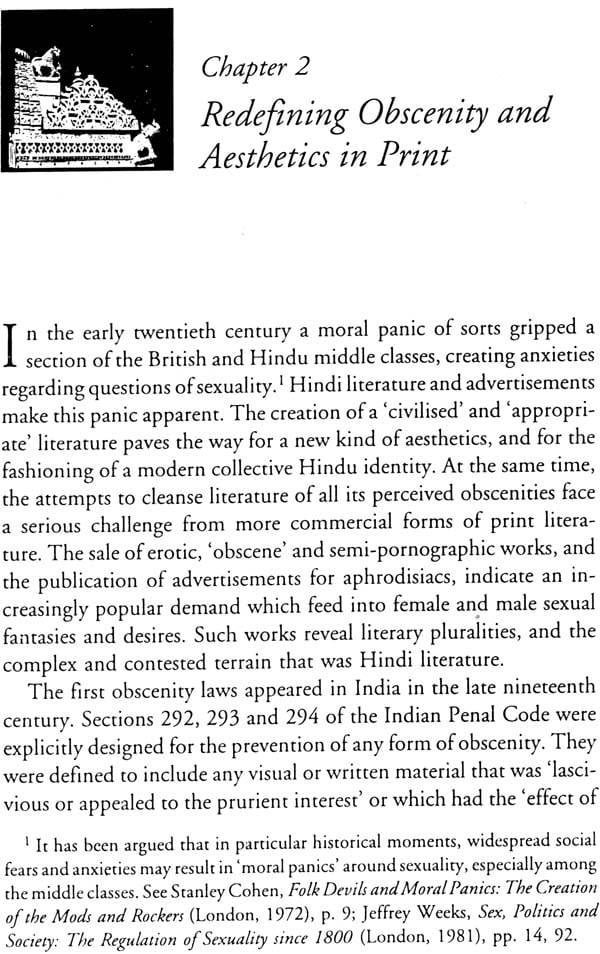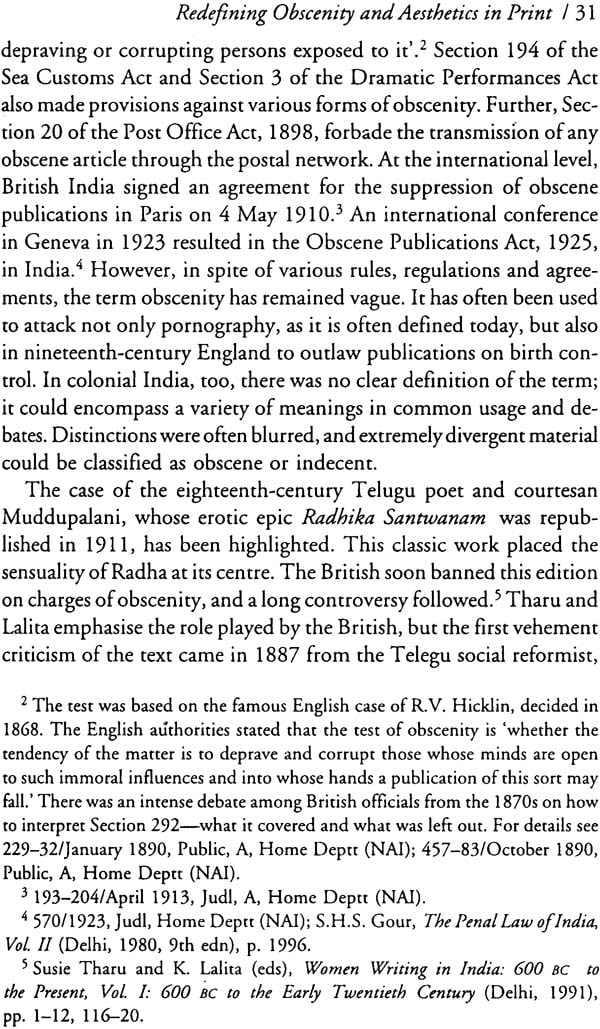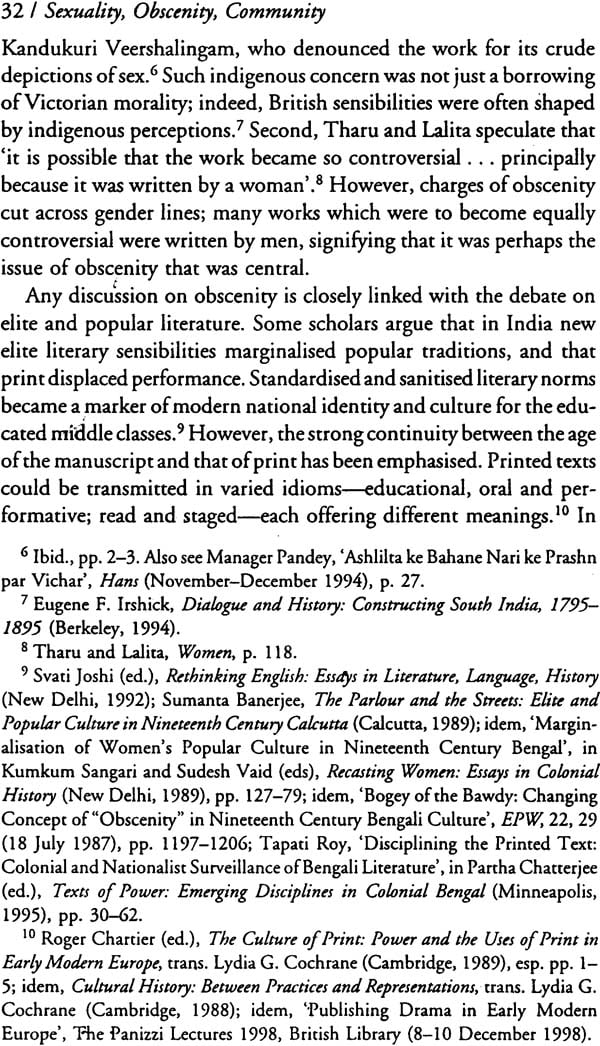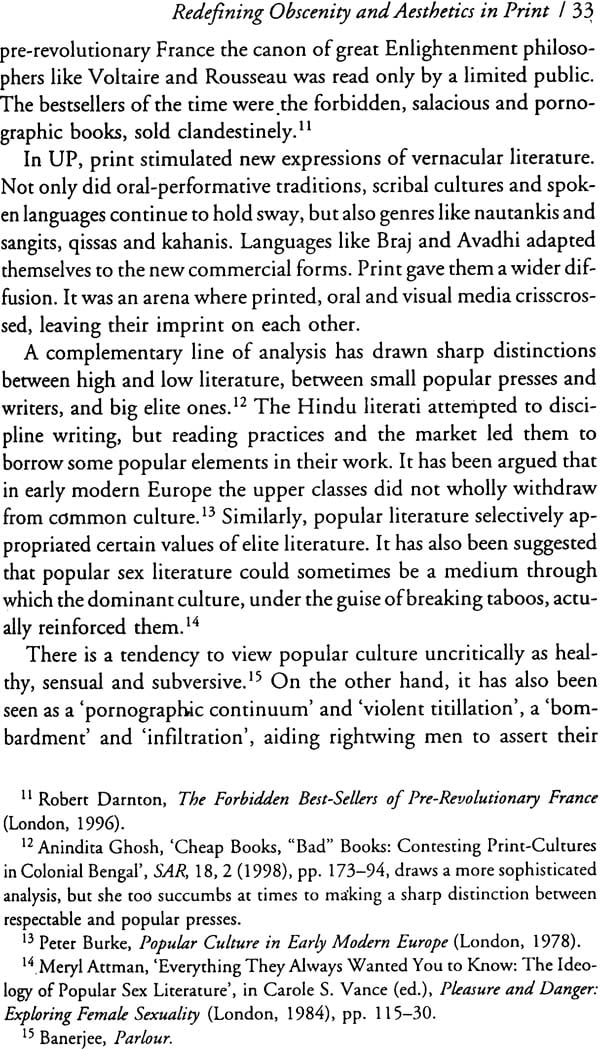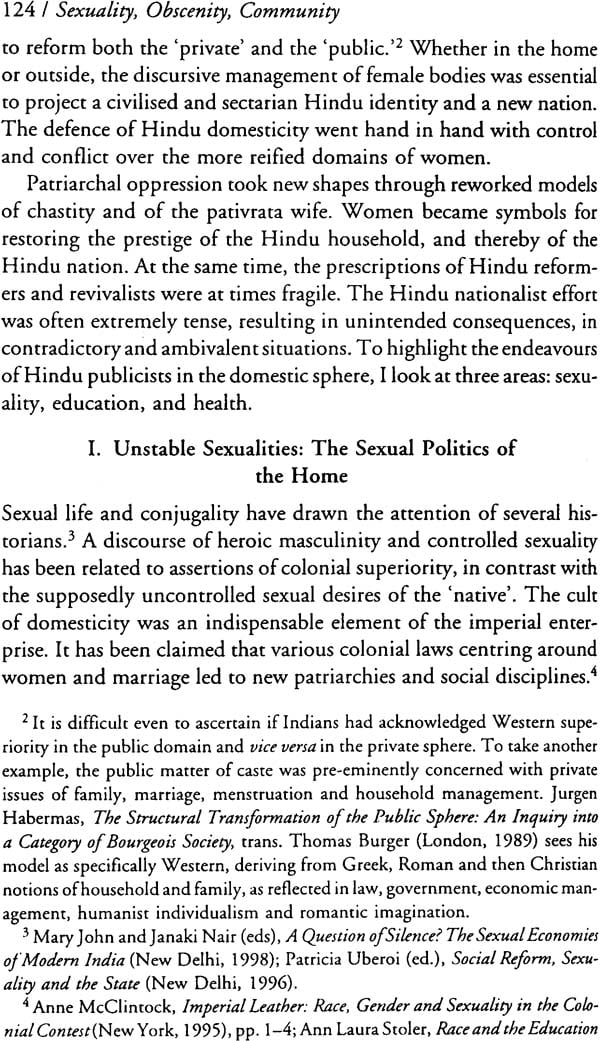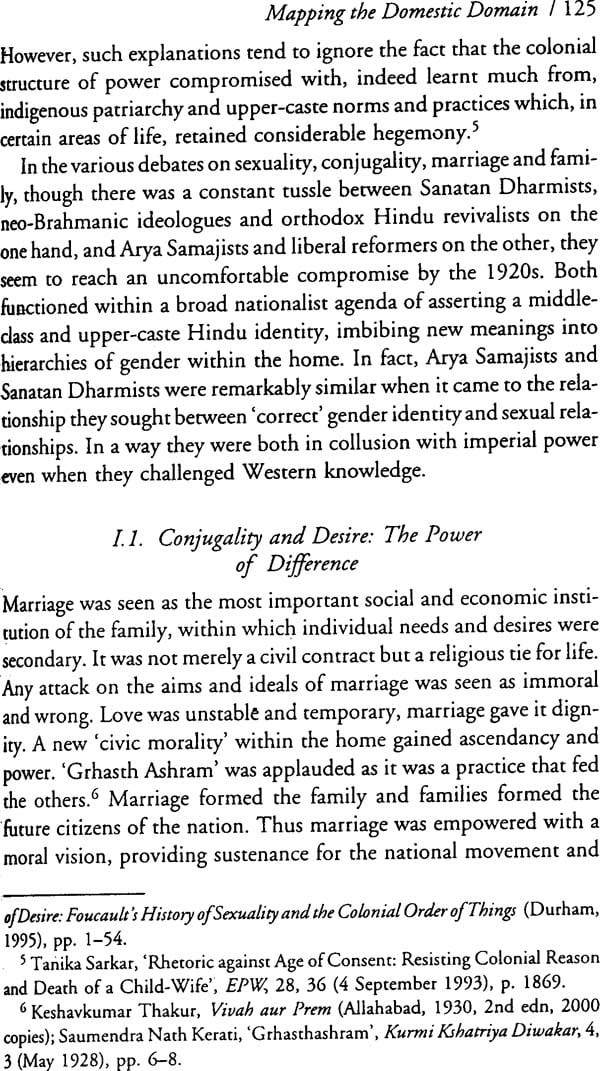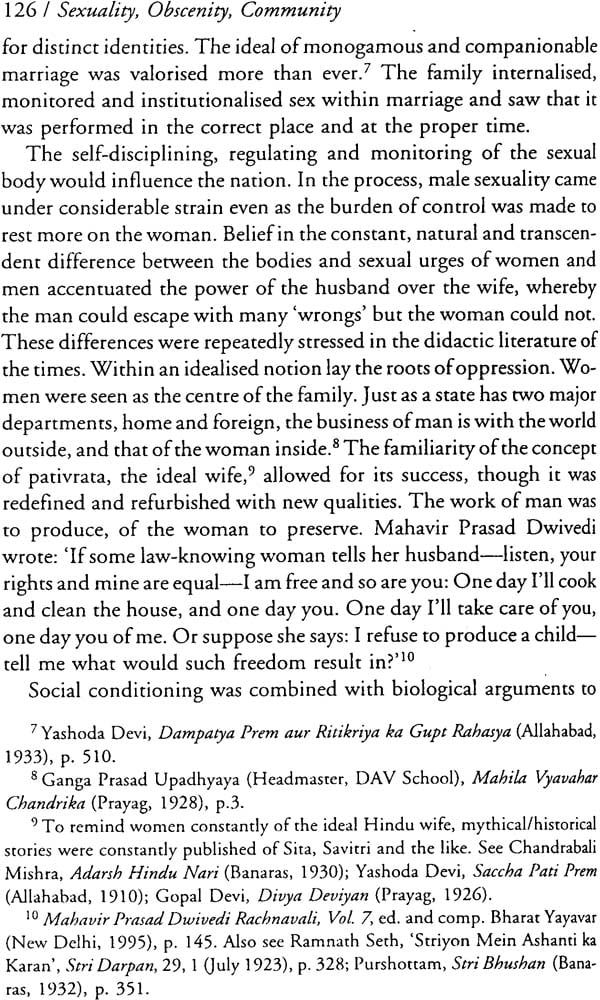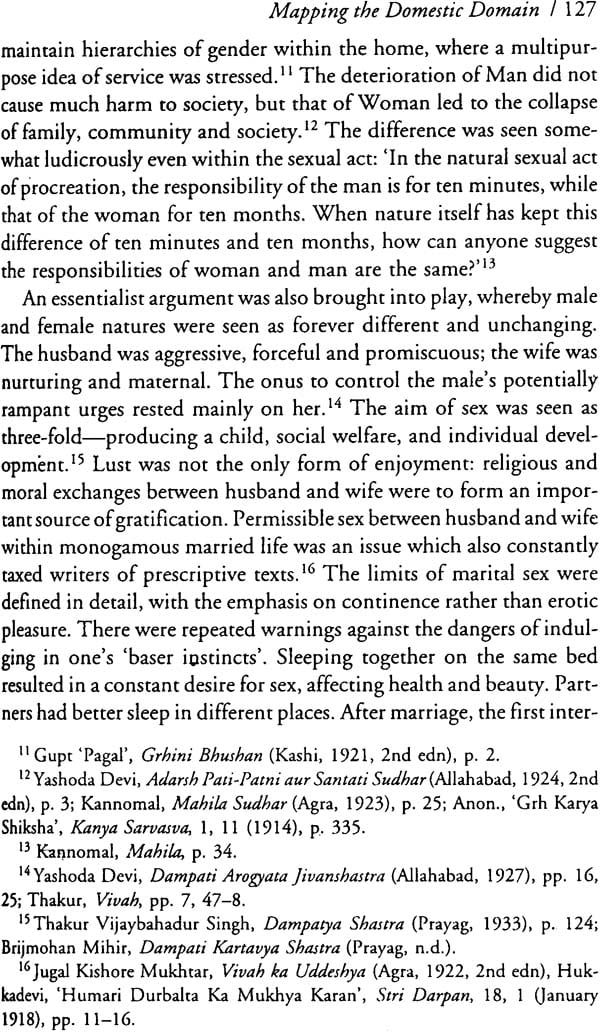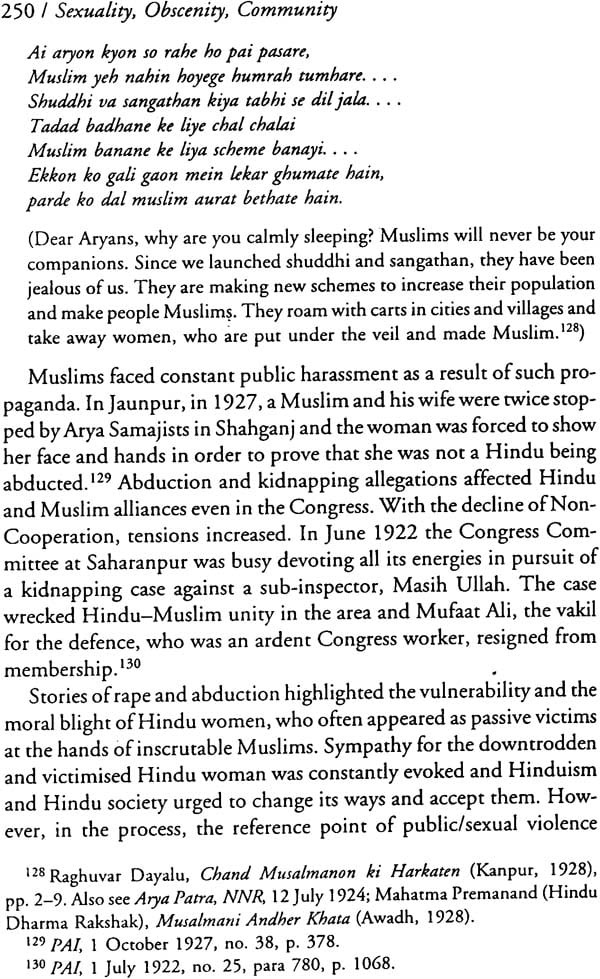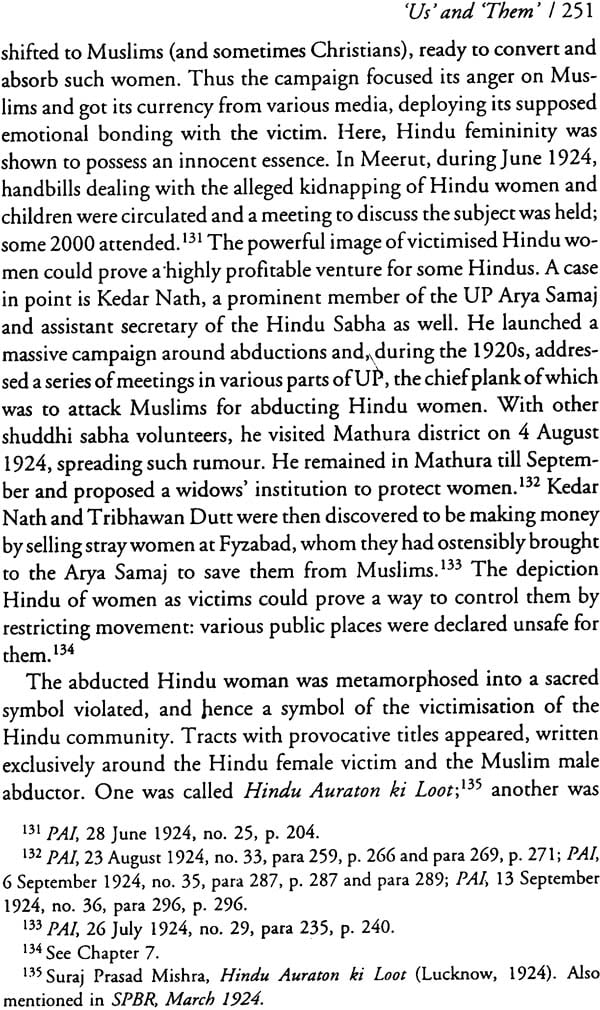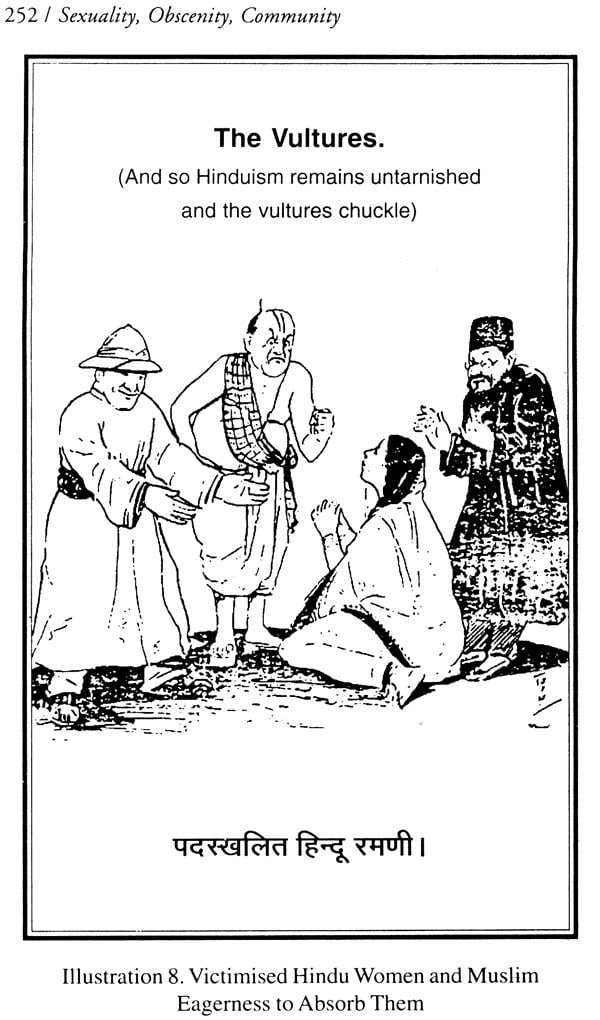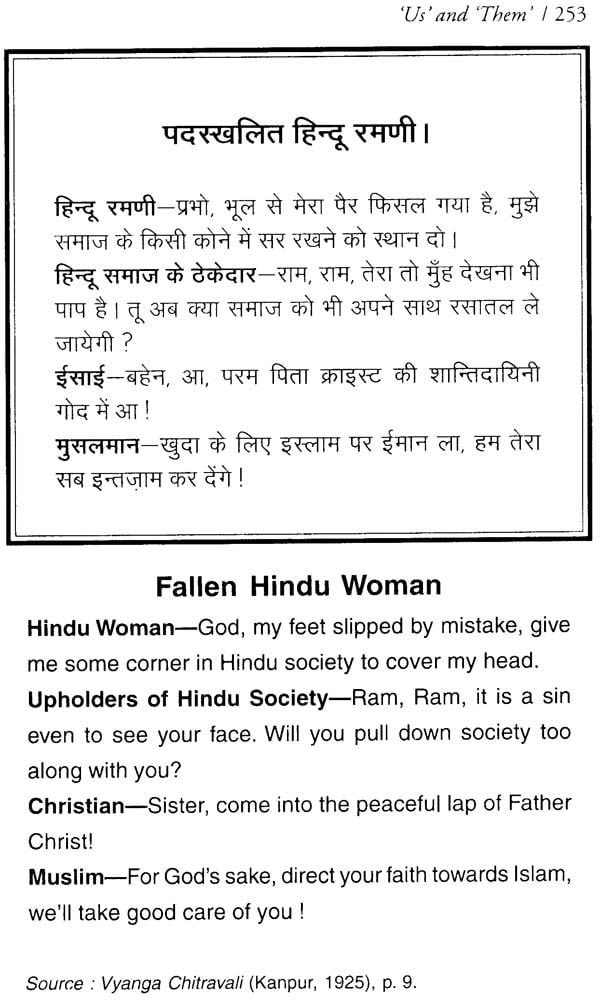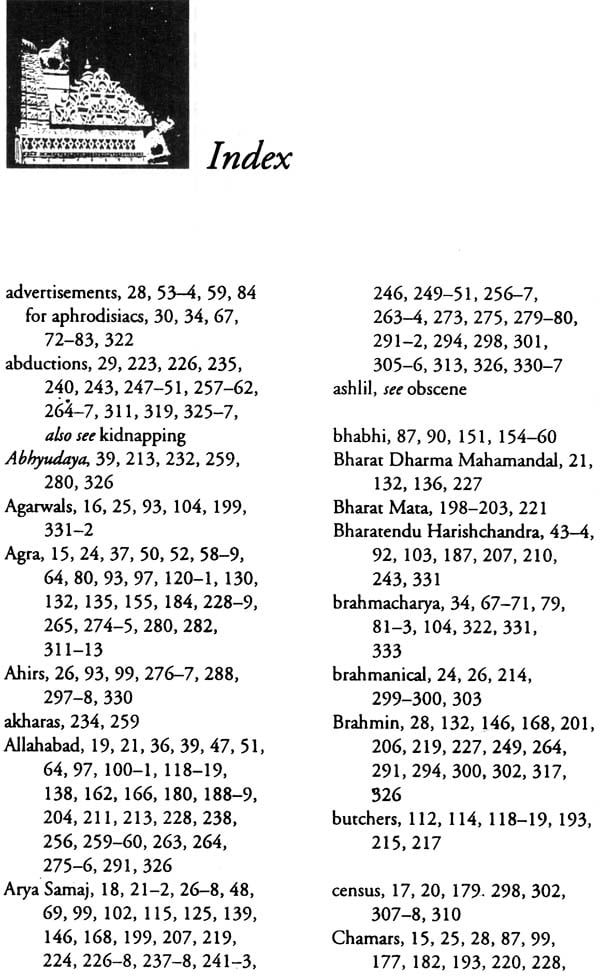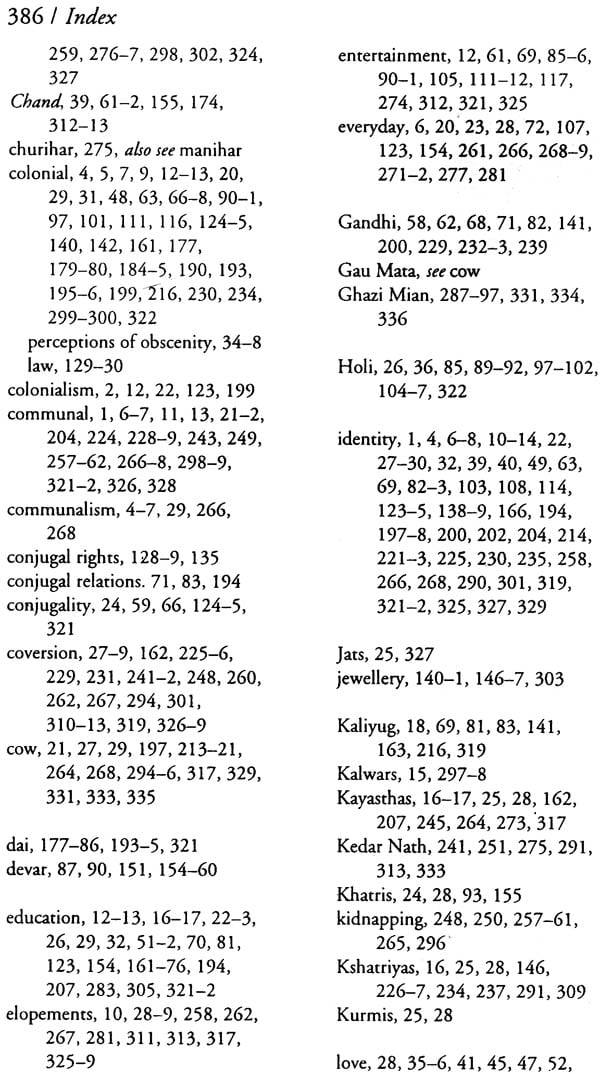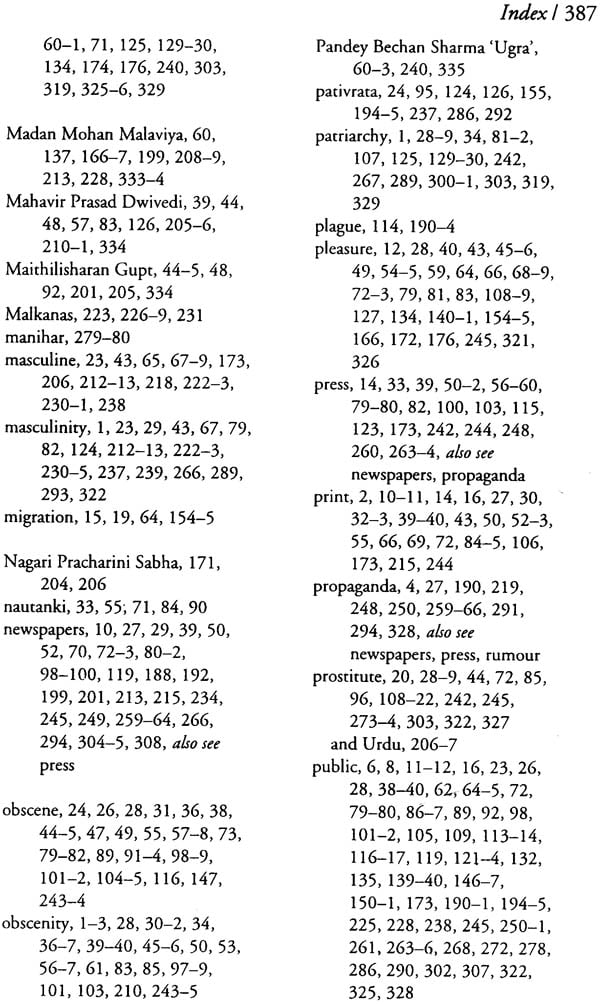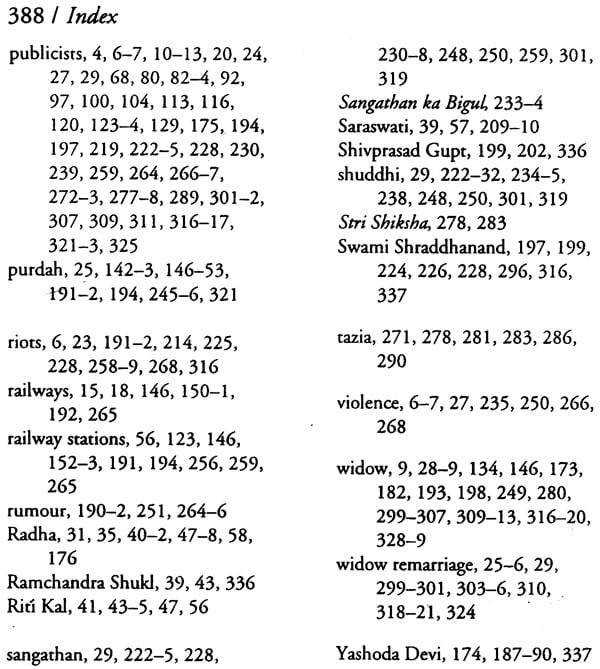
Sexuality, Obscenity, Community (Women, Muslims, and The Hindu Public in Colonial India)
Book Specification
| Item Code: | NAG085 |
| Author: | Charu Gupta |
| Publisher: | Permanent Black |
| Language: | English |
| Edition: | 2018 |
| ISBN: | 9788178241180 |
| Pages: | 403 (11 B/W Illustrations) |
| Cover: | Paperback |
| Other Details | 8.5 inch X 5.5 inch |
| Weight | 400 gm |
Book Description
About the Book
Charu Gupta shows how gendered notions about women's sexually ere used to pull together a heterogeneous populace into a coherent Hindu community in colonial north India. She traces the deliberations of (largely male) publicists on how to make Hindu women pure on how to distance Hindus from Muslims and on what constitutes Hindu sacredness and purity. She reveals the redefinitions of literature, entertainment, and the domestic area that forged a respectable and singular idea of hinduness, semi-pornographic works and popular culture are examined to reveal the complex and contested terrain of Hindu literature and Hindu identity. Based on a vast number of pamphlets, tracts, newspapers and magazines, and backed by archival data, this book also examines heightened Hindu mobilizations within everyday sites and relationships. It describes attempts to prevent interaction between Hindu women and Muslim men. It shows how polarisations were sharpened between Hindus and Muslims, thereby camouflaging the realty of caste hierarchies. Hindu anxieties about their demographic decline are discussed alongside shifting debates on widow remarriage and stereotypical ideas about Muslims.
About the Author
Charu Gupta teaches History at Delhi University and is internationally recognized for her scholarship on women's issues, Hindi literature, and north Indian communalism.
Note on Transliteration
Hindi words are neither translated nor italicised in the text; most are included in the glossary. Phrases and poems have been italicised and translated in the text. I have not used diacritical marks but have instead transliterated Hindi terms phonetically. The final 'a' has occasionally been dropped, except in words familiar within English usage or Indology, such as dharma, Vaishnava, Krishna, Kayastha, and yavana. Certain words included in unabridged English dictionaries, and the names of organisations, castes and deities, have not been italicised. Translated titles of various Hindi tracts have been given in the bibliography. They are not always exact translations: they state the subject of the tract. Spellings, especially of place names, have been standardised; modern spellings have been used. Thus, Banaras for Benaras, Allahabad for Prayag, Kanpur for Cawnpore, and Mathura for Muttra, except when these appear within quotes or in the actual title of, say, a newspaper, an article or an organisation. When citing the place of publication, modern spellings have mostly been used, though Kashi and Prayag have been retained. In relation to some tracts, the name of the publisher and the number of copies published have been given in footnotes, whenever this seemed relevant. All Vikram Samvat dates have been converted to Roman dates by the standard method of deducting fifty-seven years. All references to archival unpublished documents state the file number first, followed by the year, then other details, and finally the department and location.
Contents
| List of Illustrations | viii | |
| Acknowledgements | ix | |
| Note on translation, transliteration orthographyand referencing methods | xiii | |
| Abbreviations | xiv | |
| 1 | Introduction | 1 |
| Women, caste, class, hindu communalism in UP | 13 | |
| 2 | Redefining obscenity and aesthetics in print | 30 |
| Colonial perceptions of obscenity | 34 | |
| Obscenities in hindu literature | 39 | |
| The indigenous elite and literary concerns | 39 | |
| Dirty literature: contesting the logic of morality? | 49 | |
| Brahmacharya, kaliyug and the advertisement of aphrodisiacs | 66 | |
| 3 | Sanitising women's social spaces | 66 |
| Controls over entertainment | 85 | |
| The dangers of prostitutes: The moral and urban geographical frameworks of Hindus | 108 | |
| 4 | Mapping the domestic domain | 123 |
| Unstable sexualities: The sexual politics of the home | 124 | |
| Conjugality and desire: The power of difference | 125 | |
| Controversies around some legislative activities on hindu marriage | 128 | |
| Fashion, clothes, jewellery, purdah | 140 | |
| The devar bhabhi relationship | 151 | |
| Education and the fear of reading: stated aims unintended consequences | 161 | |
| Gender, health and medical knowledge | 176 | |
| From traditional dais to trained midwives | 177 | |
| Child care, women's health and indigenouspractices | 185 | |
| Plague and women's honour | 190 | |
| 5 | The icon of the mother: bharat mata, matri bhasha and gau mata | 196 |
| Mapping the mother/nation: the bharat mata temple at Banaras | 198 | |
| Language debates | 203 | |
| Hindi as mother | 205 | |
| Lewd or chaste, femine or masuline? | 206 | |
| The cow as mother | 213 | |
| 6 | Us and them : anxious hindu masculinity and the other | 222 |
| From malabar to malkanas: the shuddhi and sangathan movements | 223 | |
| Evoking Hindu male prowess, community and nation | 230 | |
| 7 | Hindu woman as sister-in-arms | 235 |
| Conceiving the other | 239 | |
| Approaching the Muslim woman | 239 | |
| Abduction campaigns and the lustful Muslim male | 243 | |
| Innovative propaganda manipulation | 259 | |
| Hindu women, Muslim men | 277 | |
| Regulating women by fracturing shared spaces in every life | 268 | |
| Economic and social boycott | 273 | |
| Attacking the cult of ghazi mian | 281 | |
| Hindu wombs, Muslim progeny: shifting debates on widow remarriage | 298 | |
| The problem of widows sexuality | 302 | |
| The numbers game | 307 | |
| 8 | Some conclusions and beyond | 321 |
| Elopements and conversions: The recuperative possibilities of possible love? | 325 | |
| Appendix: Brief background of some Hindi writers and hindu publicists | 330 | |
| Glossary | 338 | |
| Bibliography | 345 | |
| Index | 385 |
